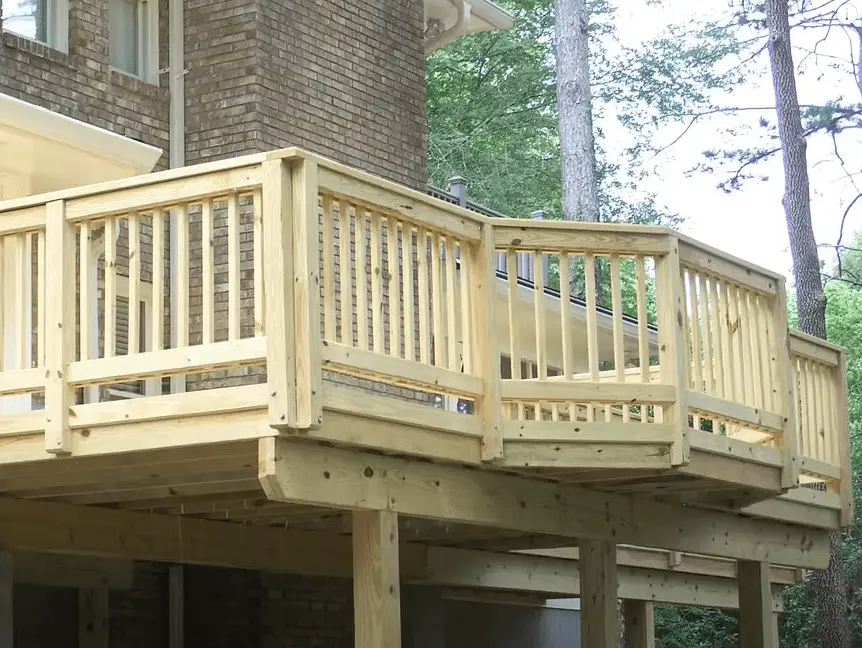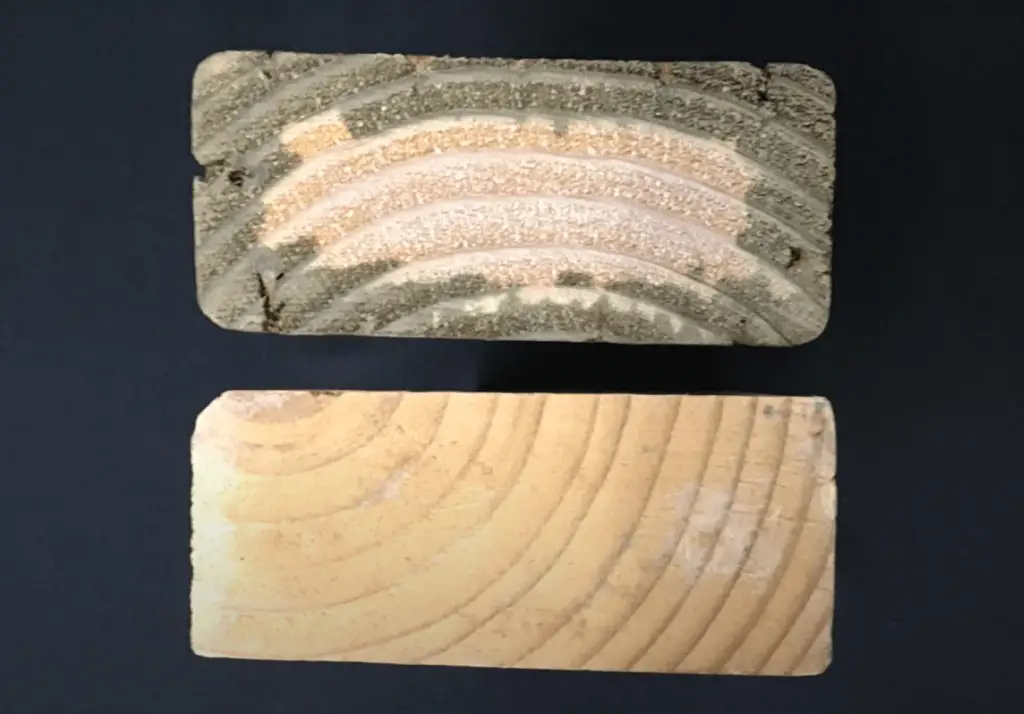Wood that’s in contact with the ground can rot. You don’t want your deck or fence to fall apart, so be sure to treat the wood to prevent rot from taking over. Here’s how to treat wood for ground contact, so you don’t have to worry about mold and mildew moving in and taking over!
Wood treatment for ground contact
You may have a problem with what is called ground contact. This refers to wood that rests directly on soil or other surfaces that are wet such as decking over a concrete patio, or porch railings and decks above grade. What happens is that moisture seeps into these pieces of wood, causing them to expand and contract more than normal outdoor timbers.
This makes them susceptible to splitting, warping, and ultimately rotting if they are not treated properly. What do you need to do? There are many different kinds of chemicals used in preserving wood, but one way to protect it from ground contact is by using what’s known as a ground contact preservative. What does a ground contact preservative do?
It actually soaks into all of the pores in your timber, keeping it rot-free.
Recommended Reading
How to repair rot in wood
Longevity of pressure treated wood
The best treatment product for ground contact wood
When considering the best product for preserving exterior wood and protecting it against termites, beetles, and ants, Woodlife Coppercoat is an ideal option. This EPA-registered formula is specifically designed to defend against decay, resist mold and mildew, and control moisture damage.
Proper Application and Benefits of Woodlife Coppercoat
For optimal results, it is recommended to allow the wood to dry for at least 24 hours before installation or applying a topcoat. Woodlife Coppercoat is ready-to-use and can be applied through dip, roller, or brush application methods. By utilizing this anti-wicking wood treatment, you can effectively prolong the lifespan of non-pressure-treated wood.
If you want to keep your ground contact deck in good shape, you must make sure that all of its pieces are treated with a high-quality preservative + sealant. But, there are many options for treating wood for ground contact.
Benefits of Applying a Topcoat to Wood Preservatives
While wood preservatives like Woodlife Coppercoat offer excellent protection against decay, insects, and moisture, applying a topcoat can provide additional benefits. Here are some reasons why using a topcoat is recommended:
- Enhanced Durability: A topcoat acts as an extra layer of protection, further shielding the wood from environmental factors such as UV rays, rain, and temperature fluctuations. This added barrier can extend the life of the wood and preserve its appearance.
- Improved Water Resistance: While wood preservatives are designed to repel moisture, a topcoat can provide an additional level of water resistance. This is particularly important for exterior wood exposed to rain, snow, and humidity. A topcoat helps prevent water from penetrating the wood, reducing the risk of warping, swelling, and rot.
- Aesthetic Appeal: Applying a topcoat can enhance the visual appeal of the wood. It can provide a smooth, consistent finish and add depth to the color of the wood. Additionally, some topcoats come in various finishes, such as matte, satin, or glossy, allowing you to achieve the desired look for your project.
- Ease of Cleaning and Maintenance: A topcoat can make the wood easier to clean and maintain over time. It creates a protective surface that is less prone to dirt, stains, and grime buildup. Regular cleaning becomes simpler, and the wood retains its original beauty for a longer period.
While a wood preservative like Woodlife Coppercoat offers excellent protection on its own, adding a topcoat can provide additional advantages in terms of durability, water resistance, aesthetics, and ease of maintenance. It is worth considering to further enhance the longevity and appearance of the treated wood.

Tips on applying treatment to ground contact wood
You can use three main types of treatment on ground contact wood: silicate preservatives, phenol-formaldehyde (PF) preservatives, and copper-based preservatives. However most of these you can only get these from lumber that’s already treated.
How do you make wood last longer in the ground?
To make wood last longer there are no shortcuts the wood has to be protected with a good wood preservative and a sealer.
Traditionally people used diesel oil to treat ground contact lumber. The oil would be applied up to about a foot above the ground. However, the use of diesel oil as a wood treatment for ground contact lumber is no longer recommended due to environmental concerns and health risks. Diesel oil contains harmful substances and pollutants that can leach into the soil, potentially contaminating groundwater and harming surrounding ecosystems.
The industrial option is usually pressure-treating ground contact lumber.

Pressure-treated timber has been treated with preservatives. The preservatives are pushed deep into the wood grain using pressure.
The treated lumber will have no problem with rot if used as ground contact lumber. There are a few downsides to using this type of lumber though.
For instance, pressure-treated lumber is usually sold with high moisture content. This means you will soon run into split warp, check and twist challenges with this lumber as it dries.
Pressure-treated will usually have a green tint that may be ugly if a natural look is what is intended.


